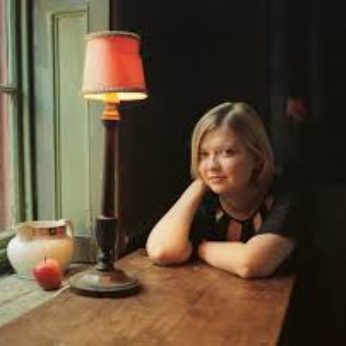Composer: Dmitri Shostakovich (b. 1906 - d. 1975)
Performance date: 28/06/2015
Venue: Bantry Library
Composition Year: 1944
Duration: 00:28:01
Recording Engineer: Richard McCullough, RTÉ lyric fm
Instrumentation: vn, va, vc
Instrumentation Category:Trio
Artists:
Alina Ibragimova -
[violin]
Natalie Clein -
[cello]
Alexander Melnikov -
[piano]

During the siege of
of Shostakovich’s, Benjamin Fleyshman, was killed in action. At the time of his
death he had been working on a one-act opera, Rothschild’s Violin, based on a
story by Chekov, which Shostakovich proceeded to complete at the same time as
beginning a piano trio in memory of his young friend. He finished the opera on
5 February 1944. The same day his Eighth Symphony was performed in
by his close friend, the musicologist Ivan Sollertinsky. Less than a week later
Sollertinsky died of a heart attack. It
will be unimaginably difficult to go on living without him; wrote the
composer. They had been bosom friends since 1927 and reading Shostakovich’s
story you feel that Sollertinsky was not only a true friend, who could be
relied on at all times, but was also able to communicate with him as an equal.
For instance Sollertinsky had introduced Shostakovich to Mahler, whose music
found a vivid response in the young composer.
There is a tradition of Russian composers
writing Trios as memorials, Tchaikovsky for Rubinstein, Rachmaninov for
Tchaikovsky, Arensky for Davidov, so Shostakovich wrote his for Sollertinsky.
But although he dedicated it to his greatest friend it was the same Trio that
he had begun in memory of his pupil Fleyshman, and through him the whole Jewish
race represented by the Jewish folk tune quoted in the last movement. This
makes it the first of his borrowings from Jewish music from this Finale to the
Finale of the Fourth Quartet to the Allegro
molto of the Eighth Quartet to the song cycle From Jewish Folk Poetry to
wrote: Jewish folk music can seem
cheerful and in reality be deeply tragic. Almost always it is laughter under
tears. This characteristic comes very close to my concept of music. Music must
always contain two strata.
So from this emerges a great four movement
elegy that is one of the classics of twentieth century music. The
eerie introduction with the solo cello in harmonics creates an otherworldly sound
to which violin and then piano add their muted voices. This is progressively
animated by numerous ostinato and marcellato effects as well as a second
theme of bizarrely inappropriate cheerfulness. The Scherzo is like a whirlwind with
its wild energy and haunting lilting Allegro, said by many perfectly to mirror
the quicksilver intelligence of Sollertinsky There is a brief Trio hidden at
the heart of the movement.
The
is both its own passionate elegy and an introduction to the unrestrained horror
of the Finale. It is cast in the familiar Shostakovich form of the Passacaglia
with five variations of painful beauty unfolding over the funereal tread of the
piano. The Finale opens with repeated notes on the piano and a subdued
pizzicato violin. The tension is then increased so that the piano can start the
Yiddish folk tune accompanied by pizzicato chords on the strings as in klezmer
music. A new theme is added to this increasingly macabre dance and the tension
is screwed tighter and tighter until a climax of total despair is reached with
the music spiralling round and round going nowhere. This is music in the same
ferocious spirit as the similar movement in the Fourth Quartet, such a
clear-sighted indictment of state terror that they were both banned for years.
Then the dance starts again with renewed horror but soon collapses, until
eventually the Passacaglia reminds us of who had died and why.
Copyright © 2024 West Cork Music. All rights reserved.
Designed and developed by Matrix Internet